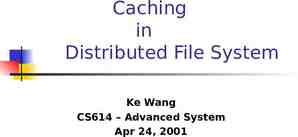Atomic Absorption Terry A. Ring Chemical Engineering University
18 Slides976.50 KB
Atomic Absorption Terry A. Ring Chemical Engineering University of Utah
E -13.6 eV Z2/n2
Photo absorption/emision
Atomic Absorption
Lamps are Special Cathode with receptacle for material Vapor of Material to be analyzed Vapor Excited by plasma Light of particular wavelength
Aerosol Flow Burner Fuel (& oxidizer) mixed with aerosol of sample Sample asperated into burner Flame ionizes Sample
Intensity vs Wavelength in AA Light Source Absorbance Monochromatic Detector
Analysis Absorption of Light Electrons are excited Light Intensity on detector is less
Graphite furnace AA
Other AA’s Flame Spark Arc Plasma Laser X-ray
Atomic Emission Spectroscopy Flame is used to generated Atoms with excited electrons and ions Light is filtered in spectrometer to give Intensity vs wavelength
Spectrometer Emitted Light Broken into different color components – Prism – Grating
X-ray Fluorescence Two Steps – Absorption of X-ray Elimination of electron for k or L shell – Collapse of M shell electron to fill hole Light emission (xray)
Potential X-ray Emissions From K shell hole – K , K , K , – Zeeman Effect - 1, 2, 3 From L shell hole – L , L , L ,
Generation of X-rays High Voltage Electrons Electron Scattering Electron Absorption – X-ray photo ionization
XRF Energy-dispersive XRF Wavelengthdispersive XRF
XRF Detectors Energy-dispersive XRF – Semiconductor Wavelength dispersive XRF – Scintilation Counter
XRF Analysis Samples can be in any form – Solid – Powder – Liquid























